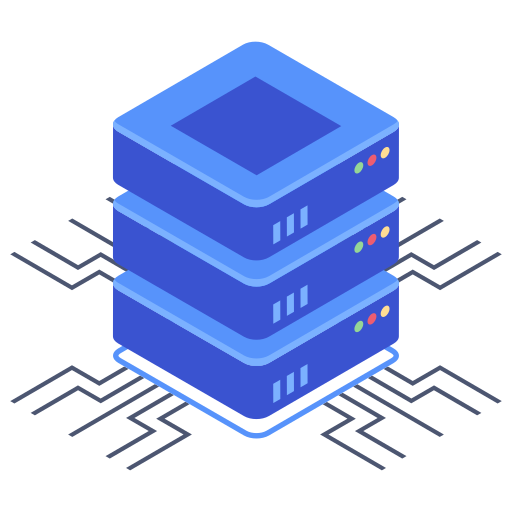Choosing the right web hosting plan is crucial for the success of any website, regardless of size. For websites anticipating significant growth and high traffic volumes, the promise of “unlimited bandwidth” is often a key selling point. However, understanding what “unlimited” truly means and how to effectively manage large traffic loads is paramount to avoiding performance issues and ensuring a positive user experience. This article dives into the practical aspects of using unlimited bandwidth hosting and navigating the challenges of handling substantial website traffic.
Understanding “Unlimited” Bandwidth
The term “unlimited bandwidth” is a marketing term, and it rarely translates to truly limitless resources. While you won’t be explicitly capped on the amount of data transferred, hosting providers often have fair use policies in place. These policies typically outline acceptable usage patterns and may involve restrictions on excessive bandwidth consumption that can negatively impact other users on the shared server. It’s essential to review your provider’s terms of service carefully to understand these limitations. I always advise my clients to do this.
Fair Use Policies and Their Implications
These policies act as a safeguard against abuse. They prevent one website from monopolizing server resources, affecting the performance of other websites hosted on the same server. Common triggers for exceeding fair use limitations might include:
- Hosting excessively large files.
- Distributing large files, such as videos or software, without utilizing a content delivery network (CDN).
- Experiencing a sudden surge in traffic due to a viral campaign or unexpected media attention.
- Running bandwidth-intensive applications or scripts without optimization.
Understanding your provider’s fair use policy and adhering to its guidelines is crucial to maintaining optimal website performance and avoiding unexpected service disruptions.
Optimizing Your Website for High Traffic
Even with “unlimited” bandwidth, optimizing your website is crucial for managing large traffic loads effectively. Unoptimized websites will experience performance degradation even with ample bandwidth, leading to frustrated visitors and potentially lost revenue. My approach involves focusing on several key areas.
Content Delivery Networks (CDNs)
A CDN distributes your website’s content across multiple servers globally, reducing latency and improving loading times, particularly for visitors located far from your primary server. This is exceptionally helpful when dealing with sudden spikes in traffic. CDNs significantly reduce strain on your hosting server by caching static content like images, videos, and CSS files, thereby handling a considerable portion of your bandwidth demands.
Caching Mechanisms
Implementing various caching strategies is vital. Browser caching stores static assets like images and CSS files on the user’s computer, improving repeated visits’ load times. Server-side caching stores frequently accessed pages in memory, reducing server load and response times. A well-configured caching system can dramatically improve performance and reduce bandwidth usage.
Database Optimization
Efficient database management is critical. Optimizing queries, indexing tables correctly, and using appropriate database technologies can significantly reduce the load on your database server, which often contributes to overall bandwidth usage. Slow database queries can cause considerable strain on your server, leading to performance bottlenecks.
Image Optimization
Large, unoptimized images can consume significant bandwidth. Compressing images without sacrificing quality can dramatically reduce their file size and improve website load times. Using optimized image formats like WebP also contributes to efficient bandwidth usage.
Scaling Your Hosting Solution
Even with optimized websites and fair use policies, significant and sustained traffic growth may eventually require scaling your hosting solution. Choosing a hosting provider who offers upgrade options or solutions for scaling is critical for long-term growth.
Upgrading to a More Powerful Plan
As your website grows, you may need to upgrade to a more powerful hosting plan with increased server resources allocated to your website. This could include increased RAM, CPU power, and storage space. This is a natural progression for many thriving websites.
Utilizing Cloud Hosting
Cloud hosting offers scalability and flexibility. It allows you to dynamically adjust your resources based on demand, adding or reducing capacity as needed. This is an excellent solution for websites experiencing unpredictable traffic fluctuations. You pay only for the resources you utilize, making it a cost-effective strategy for managing unpredictable peaks.
Frequently Asked Questions
What happens if I exceed my hosting provider’s fair use policy?
Exceeding your provider’s fair use policy can result in several consequences, ranging from temporary service throttling to account suspension. The specific actions taken depend on your provider and the severity of the transgression. You’ll typically receive warnings before more serious action is taken. Communication with your hosting provider is crucial to resolve any issues.
How can I monitor my bandwidth usage?
Most hosting providers offer tools to monitor your bandwidth consumption. This might involve cPanel, a control panel commonly used by web hosting companies, or other dedicated monitoring systems. Regularly reviewing your bandwidth usage helps identify potential problems and allows for proactive optimization and scaling.
What are some signs that I might need to upgrade my hosting plan?
Several indicators suggest you may need a more powerful hosting plan. Slow loading times, frequent downtime or errors, and high server loads are all significant warning signs. If you consistently approach or exceed your provider’s fair use policy limits, despite your optimization efforts, then it’s a compelling sign you require a more robust hosting solution.

